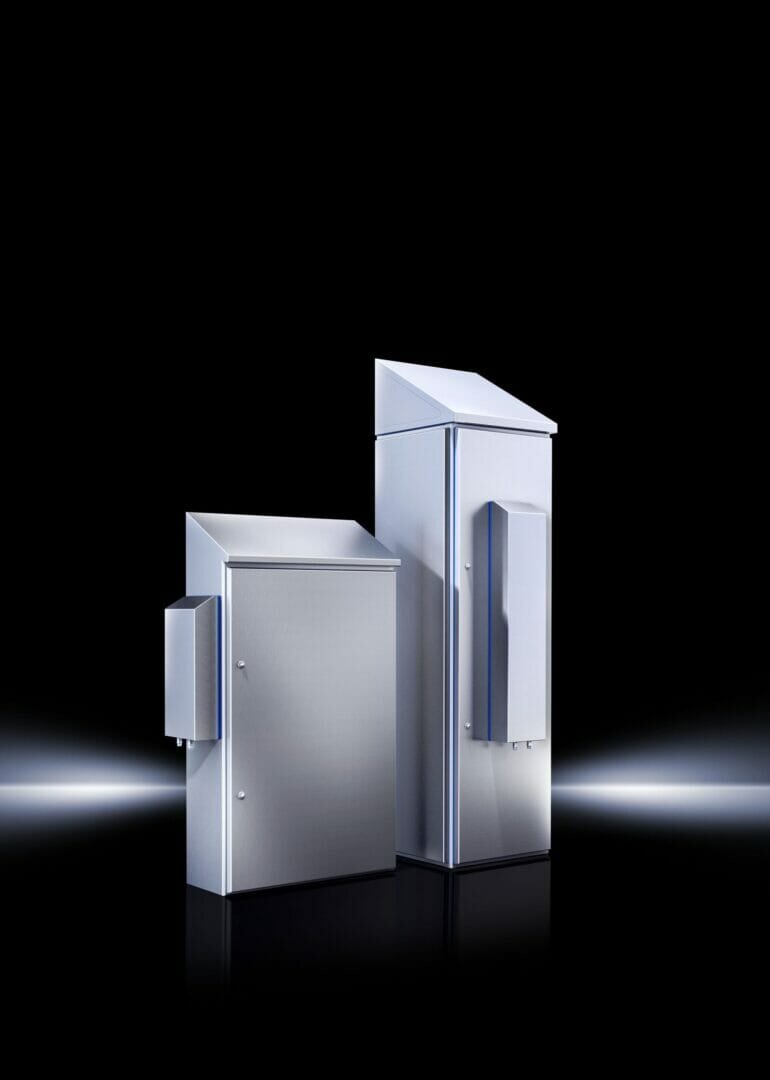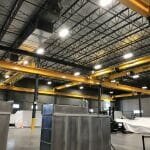By Karl Lycett – Rittal UK’s Product Manager for Climate Control
The food and beverage industry gives us some of life’s most defining and uplifting moments – from exotic feasts to simple every-day pleasures (who can walk past a bakery and the smell of fresh bread and pastries, and not feel their mouth watering? Not me!)
However, there is a simple reality for those of us who work in support of the IT infrastructure used by the industry and that is, while their products are enticing, food and beverage factories can be hostile places for any electrical equipment! Raw ingredients, such as sugars and yeast, need to be controlled and prevented from entering enclosures to maintain output and maximise the lifespan of the expensive machinery contained inside.
This need – effectively to create a sealed enclosure within which the electrical equipment can function – needs to be balanced with the equally important requirement for optimum temperature management. Indeed, one of the critical factors in creating a ‘protective environment’ for this equipment is effective climate control.
All electrical equipment generates heat as a by-product of its activities, and this heat needs to be removed. Plus, of course, there is the ambient heat of the environment in which the equipment is sited. Maintaining a stable temperature within an enclosure ensures that electrical drives etc. can work to their full potential, thereby ensuring that the production equipment it controls can operate at high speed. All this has a major impact on productivity and turnover; the faster a pallet-wrapping machine works, for example, the more goods can be shipped.
Normally, operators who are specifying the right climate control for an enclosure have a large selection to choose from. But food and beverage manufacturing creates specific challenges which must be fully understood before making a selection. The main one is the ‘Hygiene Zone’ in which the equipment lies.
Hygiene Zones are defined by the EN 1672-2:2005 Standard which determines the level of exposure the raw ingredients have to the environment and possible contaminants.
The Zones are as follows –
Zone 1 – Food Zone
Surfaces come into direct contact with foodstuffs, which will then return to the product stream. In most instances, these areas will be exposed to regular if not continuous cleaning regimes and will be sprayed down with high-pressure cleaning fluid.
It is important to ensure that both Hygienic Design (HD) enclosures and HD climate control equipment is used within these areas. This equipment is designed specifically to ensure both that they can withstand the rigorous cleaning and high-pressure jets, and that there are no nooks and crannies which can harbour germs and cause a bacterial build-up.
Rittal’s range of HD Air-to-Water Heat Exchangers are an extremely versatile option which meet the requirements of the Standard while maintaining an acceptable temperature for control equipment. They connect to a chilled water supply and come in different output sizes to remove large levels of heat for whatever size project is being planned.
Zone 2 – Splash Zone
Defined as having surfaces that will come into direct contact with foodstuffs which will not return to the product stream. These areas will still be exposed to regular cleaning routines and the floors may be sprayed, but the enclosures and climate control equipment will not.
It is strongly advised that operators install stainless steel products in this area. The reason is that although there is no direct spraying of the enclosure or its associated climate control equipment, there may be some splashing which occurs so a higher level of protection is advisable.
Rittal can supply its cooling unit range in stainless steel as an option.
Zone 3 – Non-Food Zone
This could be a warehouse or logistical space where finished goods are transported from, or taken into, the plant. There are no raw foodstuffs present in this area.
It’s unlikely in most instances for there to be any cleaning activity in these areas, apart from the occasional sweeping of debris. It’s therefore acceptable (depending on your company’s specific guidelines) to either use mild steel or stainless-steel products. This opens the full range of climate control products and the final selection can be based upon the specific scenario.
For more guidance and advice as to the best practise within the food and beverage industry, Rittal UK has created a series of webcasts.
For more information, visit the Rittal UK LinkedIn page and/or follow the links below:
Best practice in Food & Beverage industry ¦ HD Products: https://register.gotowebinar.com/recording/7920484150169004811
Essential Tips ¦ Temperature Management in the Food Industry:
https://register.gotowebinar.com/recording/2699757750553076738
Further information at www.rittal.co.uk and www.friedhelm-loh-group.com or on twitter @rittal_ltd.





